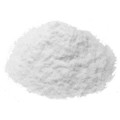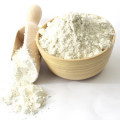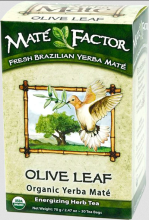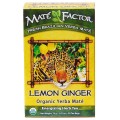 Loading... Please wait...
Loading... Please wait...- Home
- About Us
- Shipping, Returns & FAQ's
- Contact Us
-
For Your Information
- Canadian Customers Have a Choice if Shipping Via UPS
- Aura Cacia Homemade Aromatherapy Recipes
- Bella Nella Altered Art & Paper Crafts Blog
- Forms of Herbal Preparations
- Laundry Tips To Conserve Energy Blog from The Laundress
- The Story of Frontier Natural Products Co-Op
- Sovereign Silver Hydrosol and Aloe Protocol Stops Downward Spiral of Gut Dysbiosis
- Disclaimers
- Recommended Links
- RSS/Recent News
- The Story of Typhoon Housewares
- Reviews/Testimonials
- Raw Ingredients for Mfg
Olive Leaf & Yerba Mate Organic 20 tea bags Maté Factor 830568000163
Product Description
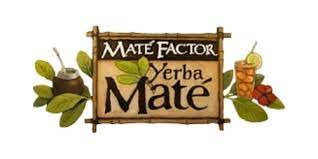 Certified Organic Ingredients: Organic Green Yerba Mate, Organic Olive Leaf
Certified Organic Ingredients: Organic Green Yerba Mate, Organic Olive Leaf
Our newest Yerba Mate tea blend is the Olive Leaf Yerba Mate. Historical evidence of the use of olive leaves dates back thousands of years. Across the globe today, olive leaf is still used as a healthy tonic. In modern times much study has been done of one of its primary constituents, oleuropein, for its strong antioxidant health benefits.
Olive Leaf provides a rich supply of oleuropein, reinforcing the immune function by combating free-radicals. Coupled with a wide range of natural polyphenols, powerful antioxidant properties are achieved by Olive Leaf, sparking interest for its support of the body. European research indicates Olive Leaf to have strong properties of fighting microbes, too.
The yerba mate tree is an evergreen from the Holly family that grows in the subtropical forests of South America. The yerba mate tree, from the Aquifoliacae family, stands between 6 to 8 meters tall, being able to even reach 15 meters. There are many different species in the family, the Ilex genus having more than 550, the holly plant included, 280 species found in South America, 60 of which occur in southern Brazil. Only 3 species though are used in the mate industry (I. paraguariensis, I. angustifolia, I. amara), Ilex Paraguariensis being the most important. The mate plant, Botanical Name: Ilex Paraguariensis (Part of the Holly Family)
The energizing effects of Yerba Mate are longer lasting than traditional caffeine beverages, and are found by most to be free from side effects such as, the jitters, mood swings, addiction, and post stimulation fatigue. The bottom line is, Yerba Mate gives you energy that really feels good.
Minerals Richly Found in Yerba Maté that Support Metabolism and Development.
chromium*copper*iron*manganese*potassium*zinc
Compound | Biological activities
Caffeine
Anticarcinogenic, antiobesity, antioxidant, antitumor, diuretic, energizer 20 to 200 mg, stimulant, topoisomerase-I-inhibitor 0.1 M, topoisomerase-II-inhibitor 99 mM, vasodilator
Chlorogenic-acid
Antioxidant IC50= 54.2 μM, analgesic, antiatherosclerotic, antibacterial, antidiabetic, antitumor, choleretic
Chlorophyll
Antibacterial, anticancer
Choline
Antidiabetic, cholinergic, lipotropic
Nicotinic acid
Choleretic, hypocholesterolemic 1 to 6 g/day
Pantothenic acid
Antiallergic 100 to 500 mg/day, antiarthritic 500 to 2000 mg/day, antifatigue
Rutin
50= 30 ppm IC 50= 120 μM, antitumor, antitumor-promoter, antiulcer, cAMP-phosphodiesterase-inhibitor, topoisomerase-II-inhibitor IC50= 1 μg/mL, vasodilator
Tannin
Antioxidant 1/3 quercetin IC50= 1.44 μg/mL, antitumor, antitumor-promoter, lipoxygenase-inhibitor, MAO-inhibitore
Theobromine
cAMP-inhibitor IC50= 0.06 mg/mL, cAMP-phosphodiesterase-inhibitor, diuretic 300 to 600 mg/day, stimulant, myorelaxant
Theophylline
cAMP-inhibitor IC50= 0.06 mg/mL, cAMP-phosphodiesterase-inhibitor, diuretic, choleretic, stimulant, vasodilator, myorelaxant 100 μM
Ursolic acid
Analgesic, antioxidant IC50= 10 μM, antiperoxidant IC35= 200 μg/mL, protease-inhibitor IC85= 18 μg/mL, topoisomerase-II-inhibitor, antiarrhythmic, anticancer, antialzheimer
More Antioxidants than Green Tea - Antioxidants in Yerba Mate
Studies show Yerba Mate to be higher in antioxidants than Green Tea. Partially responsible for this is the high levels of polyphenols found in Yerba Mate. Polyphenols are indicated to perform similarly to the 293 natural antioxidant enzymes in the body, and are believed to support these natural health promoting systems.due to the widespread genetic variety of the Ilex family, may have white or light purple stems, and thick waxy leaves that may present dented or smooth edges.
You Recently Viewed...
Currency Converter
Choose a currency below to display product prices in the selected currency.





